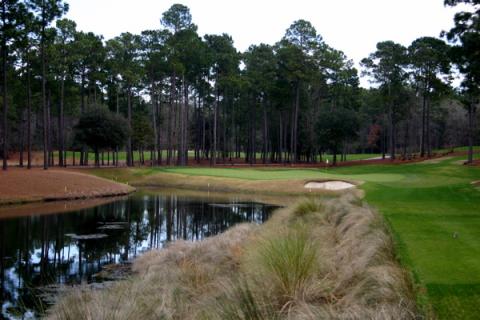
Neighborhoods near the Tournament Players Club of Myrtle Beach are included in the Centex promotion.
As you can tell from the article below, I am not a fan of complicated offers that potentially set buyer against seller. The price protection scheme being offered by some builders lasts only a few months at most, between deposit and closing, and sets up a potential argument between buyer and seller over true market value. Who needs that kind of grief?
Better is the straight-out discount, where a builder simply drops the price and you, the buyer, can figure out whether he has dropped it enough. An offer of that sort arrived in our mailbox today from Centex. This is by no means an endorsement of Centex or its homes, but we do find the offer - and the fine print - to be easier to deal with than price protection.
Centex is offering its new homes at up to $50,000 off previous prices during its Centextravaganza event the weekend of February 16 - 18 in the Myrtle Beach area. Along with the discounts on homes that begin in the $200s, Centex has arranged fixed interest loans at 4.875% APR through a local mortgage company. If you don't have any plans for either of the next two weekends, Centex has a $99 Discovery Getaway package available for a three-night stay (and the obligatory tour of the Centex neighborhoods). And if you purchase a Centex home during the event, they will reimburse to you at closing up to $1,000 in airfare of what it cost to fly to Myrtle Beach.
The Centex homes are not at the high end of the market, beginning at under $200,000 and topping out in the $400s. But some are in favored golf course communities, like the Barefoot Resort in North Myrtle Beach and Linksbrook in Prince Creek, home to the excellent Tom Fazio-designed TPC of Myrtle Beach in Murrell's Inlet, at the south end of the Grand Strand. You will find more details and the ubiquitous fine print at the Centex web site.























